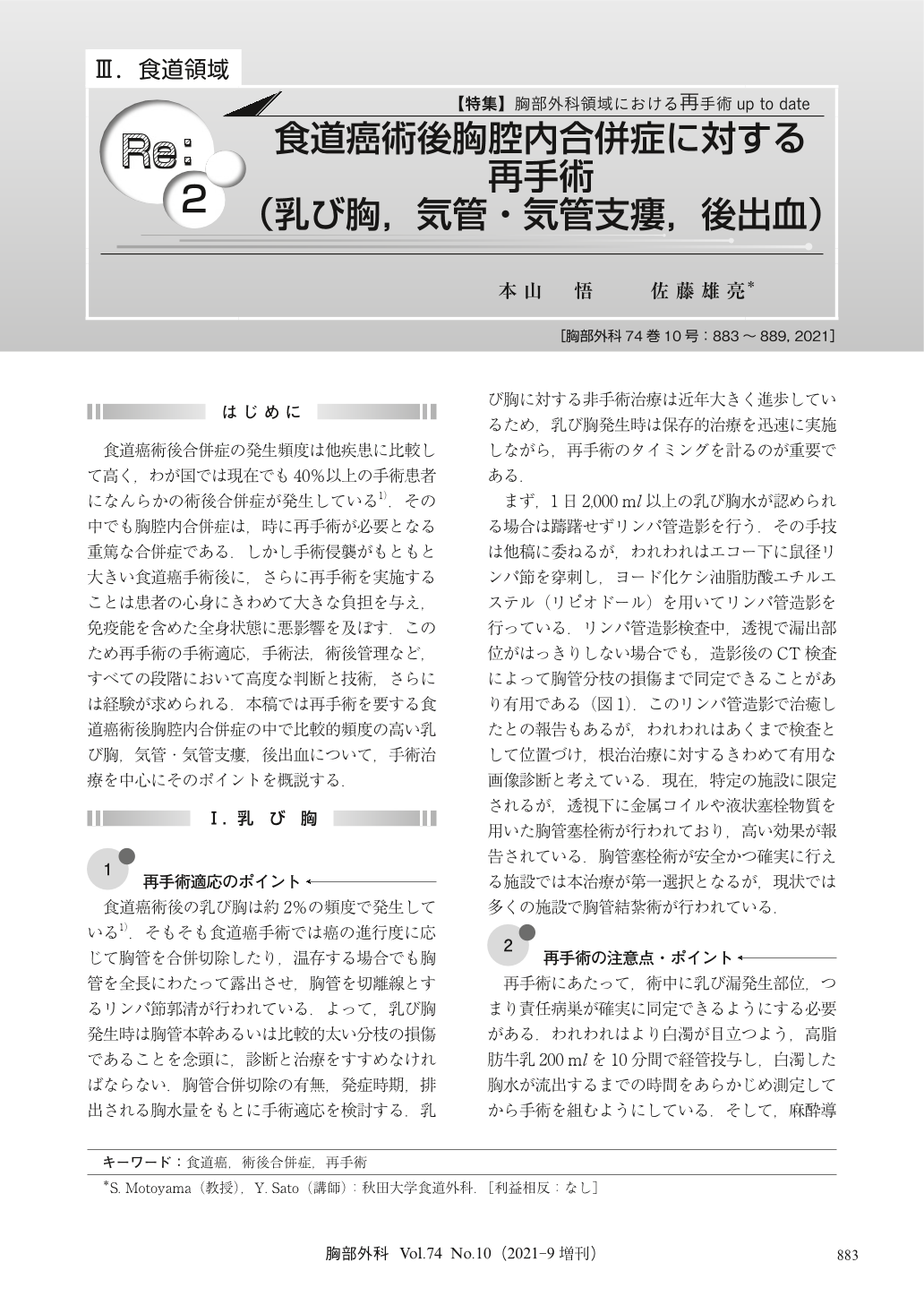Japanese
English
- 有料閲覧
- Abstract 文献概要
- 1ページ目 Look Inside
- 参考文献 Reference
食道癌術後合併症の発生頻度は他疾患に比較して高く,わが国では現在でも40%以上の手術患者になんらかの術後合併症が発生している1).その中でも胸腔内合併症は,時に再手術が必要となる重篤な合併症である.しかし手術侵襲がもともと大きい食道癌手術後に,さらに再手術を実施することは患者の心身にきわめて大きな負担を与え,免疫能を含めた全身状態に悪影響を及ぼす.このため再手術の手術適応,手術法,術後管理など,すべての段階において高度な判断と技術,さらには経験が求められる.本稿では再手術を要する食道癌術後胸腔内合併症の中で比較的頻度の高い乳び胸,気管・気管支瘻,後出血について,手術治療を中心にそのポイントを概説する.
Post-operative complications in thoracic esophageal cancer surgery occurred in more than 40% of patients, of which intrathoracic complications are the most serious complications and may require re-operation. Surgeons require a high degree of judgment, skill, and experience at all stages for surgical indications, surgical procedures, and post-operative managements, because re-operation puts a great degree of stress on the patient’s mind and body. This article focuses the relatively common post-operative complications that require re-operation, chylothorax, tracheal/bronchial fistula, and post-operative bleeding. The key point of surgery for chylothorax is to identify the site of chylothorax by lymphangiography. The key points of surgery for tracheal and bronchial fistulas are intraoperative and post-operative respiratory management and reliable covering of the fistula using latissimus dorsi or pectoralis major muscle flaps. The key point of surgery for post-operative bleeding is to reliably identify the point of bleeding and perform hemostasis without damaging the reconstructed gastro-intestinal tract. Surgeons are needed to acquire the knowledge and skills of how to perform re-operation at an appropriate time and method.

© Nankodo Co., Ltd., 2021


